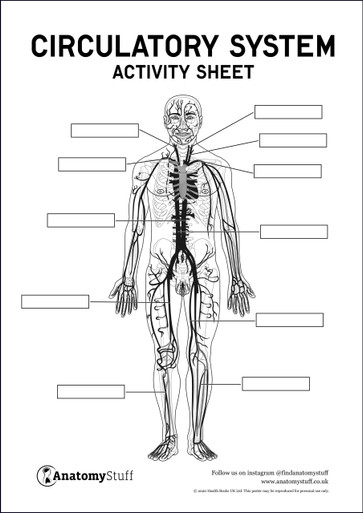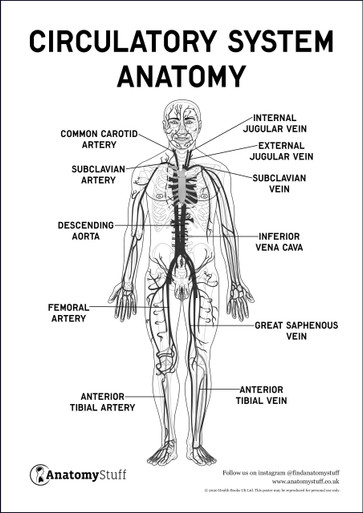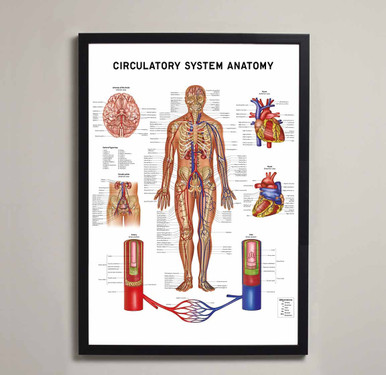Written by: Liz Paton, MSc
Circulatory System Overview
The circulatory system is a network of blood vessels which transport blood to various parts of the body. Every part of the body requires blood as it contains oxygen, nutrients, hormones and removes waste products which are all things we require to stay healthy and alive.
Circulatory System Anatomy
The circulatory system starts at the heart which is the organ that pumps oxygenated and deoxygenated blood around our body. Deoxygenated blood is transported into the heart from the rest of the body via the veins. The blood is then transported to the lungs where is becomes oxygenated and flows back into the heart where it is transported back to the rest of the body through arteries.
The blood vessels are responsible for transporting blood around the body. Arteries carry oxygenated blood to from the body to the heart. Arterioles are vessels that branch out from arteries and are much smaller. Arterioles then from into capillaries which are very small blood vessels that supply blood to small structures within the body. Capillaries connect to venules (small veins) which then connect to veins and transports deoxygenated blood back to the heart.
There are two types of circulation which are pulmonary circulation and systemic circulation. Pulmonary circulation is the circuit involving the heart and the lungs. Systemic circulation involves the circuit involving the heart and the rest of the body. Coronary circulation is a form of systemic circulation and involves the blood supply to the heart via the veins and arteries of the heart.
The Heart
Located between your lungs and surrounded by your ribs, the heart is the strongest organ in the body. The human heart is roughly around the size of your fist. The heart pumps blood around the entire body and is part of the circulatory system. The heart has four chambers, two upper chambers and two lower chambers. There is one left and right ventricle, and one left and right atrium.
There are four valves involved with regulating your heart’s blood flow: the tricuspid valve, the pulmonary valve, the mitral valve and the aortic valve. All of these valves have an important role in preventing the backflow of blood and help to keep blood pumping within the heart.
The Cardiac Cycle
The heart contracts and relaxes as it pumps blood. This results in a change of pressure within the heart and allows blood to move through the body. The relaxation period is known as diastole and is when the heart fills with deoxygenated blood from the veins. When the heart contracts this is known as systole. During this phase of the cycle the heart pumps oxygenated blood into the arteries.
The heart has an electrical system that controls the pumping mechanism via electrical impulses. In the right atrium, there is a collection of specialised cells called the sinoatrial node (SA node), whose job is to set the rhythm and rate of the heartbeat.
The impulse starts here, and spreads through the atrium’s walls, reaching into the left atrium too, which causes the muscles in both the right and left atrium to contract. This electrical signal travels downwards towards the ventricles, but is slowed down by the atrioventricular node (AV node), which are found between the right atrium and right ventricle. Slowing down the signal gives the atria enough time to contract fully before the impulse causes the muscles of the ventricles to contract.
Finally, the AV node redirects the signal through the centre of the heart and along a pathway of fibres called purkinje fibres. These fibres spread out the impulse along the walls of muscle surrounding both ventricles, causing them to contract. Once the ventricles are empty, the cycle starts again back in the atria, as the SA node releases another impulse.
Free Download PDFs
View AllRelated Products
View All













